I love to read. By God’s grace I am a pretty fast reader; I usually read a couple books each week. I find it helpful to summarize my thoughts on each book and I offer those thoughts in the hope that you will be encouraged to either read or pass over the given title.
 Rejoicing in Christ by Michael Reeves. If there is a contemporary author I love more than Mike Reeves, I’m hard pressed to think who it could be. He’s written my favorite introduction to the Reformation, my favorite introduction to the Trinity, and with Rejoicing in Christ he’s written my favorite intro to Christology. I’m not sure, however, if this book appropriately falls into the category of “Christology.” Whenever I think of Christology I think of textbook-ish works on the hypostatic union, eternal generation, and the like. Those volumes are vital indeed; we also need books that simply show us how to stare at Jesus—and do so with joy and hope! Rejoicing in Christ models exultational Christology at its finest. Grab this book!
Rejoicing in Christ by Michael Reeves. If there is a contemporary author I love more than Mike Reeves, I’m hard pressed to think who it could be. He’s written my favorite introduction to the Reformation, my favorite introduction to the Trinity, and with Rejoicing in Christ he’s written my favorite intro to Christology. I’m not sure, however, if this book appropriately falls into the category of “Christology.” Whenever I think of Christology I think of textbook-ish works on the hypostatic union, eternal generation, and the like. Those volumes are vital indeed; we also need books that simply show us how to stare at Jesus—and do so with joy and hope! Rejoicing in Christ models exultational Christology at its finest. Grab this book!
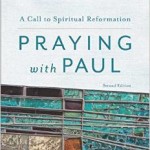 Praying with Paul: A Call to Spiritual Reformation by D.A. Carson. Earlier this year Baker repackaged Carson’s A Call to Spiritual Reformation: Priorities from Paul and His Prayers into a second edition. The new edition is really only new in the title, cover, and typesetting. Even though precious little content is new in this one, reading through it wasn’t without profit. I still think Carson’s book on prayer is about as good a book on the topic you can find. Biblical sensitivity, practical counsel, and sound instruction burst forth from every page. Praying with Paul is a must read for every pastor and would be a fantastic book for small groups.
Praying with Paul: A Call to Spiritual Reformation by D.A. Carson. Earlier this year Baker repackaged Carson’s A Call to Spiritual Reformation: Priorities from Paul and His Prayers into a second edition. The new edition is really only new in the title, cover, and typesetting. Even though precious little content is new in this one, reading through it wasn’t without profit. I still think Carson’s book on prayer is about as good a book on the topic you can find. Biblical sensitivity, practical counsel, and sound instruction burst forth from every page. Praying with Paul is a must read for every pastor and would be a fantastic book for small groups.
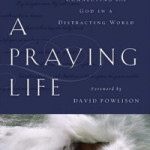 A Praying Life: Connecting with God in a Distracting World. Buoyed by the high praise upon its initial publication I picked up A Praying Life back in 2009 and remember being a bit disappointed. My second read through the book brought greater fruit. Although I still think Miller’s adaptation of certain passages is questionable and his approach to God in prayer can feel quite casual, he nonetheless offers expert diagnoses on the various heart conditions causing prayerlessness in so many Christians. I still find myself meditating on this quote, “If you try to seize the day, the day will eventually break you. Seize the corner of his garment and don’t let go until he blesses you. He will reshape the day.” May God give me a heart of prayer that clings to Christ and submits every action to His shaping.
A Praying Life: Connecting with God in a Distracting World. Buoyed by the high praise upon its initial publication I picked up A Praying Life back in 2009 and remember being a bit disappointed. My second read through the book brought greater fruit. Although I still think Miller’s adaptation of certain passages is questionable and his approach to God in prayer can feel quite casual, he nonetheless offers expert diagnoses on the various heart conditions causing prayerlessness in so many Christians. I still find myself meditating on this quote, “If you try to seize the day, the day will eventually break you. Seize the corner of his garment and don’t let go until he blesses you. He will reshape the day.” May God give me a heart of prayer that clings to Christ and submits every action to His shaping.
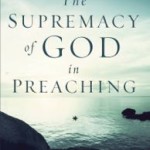 The Supremacy of God in Preaching by John Piper. I’ve often said in this space, “The best preaching books are the ones that make you want to put down the book and go preach.” Without fail, The Supremacy of God has been such a book in my life. This revised edition includes four chapters offering Piper’s reflections on preaching after thirty-three years of ministry at Bethlehem Baptist Church. This book is no manual on the technique of preaching, but it is a manual on heartfelt, biblical convictions on the nature of preaching. And we all need more of those.
The Supremacy of God in Preaching by John Piper. I’ve often said in this space, “The best preaching books are the ones that make you want to put down the book and go preach.” Without fail, The Supremacy of God has been such a book in my life. This revised edition includes four chapters offering Piper’s reflections on preaching after thirty-three years of ministry at Bethlehem Baptist Church. This book is no manual on the technique of preaching, but it is a manual on heartfelt, biblical convictions on the nature of preaching. And we all need more of those.
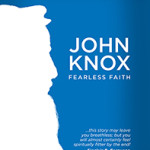 John Knox: Fearless Faith by Steve Lawson. “The Long Line of Godly Men Series” Lawson edits for Reformation Trust is fantastic. Douglas Bond already laid claim to the Knox volume in that series, so it seems Lawson had to print his own with Christian Focus. While I found his work on Knox lacking in the verve often found in the Long Line series, it’s still a useful introduction to “The Trumpet of the Scottish Reformation.” Knox is a man of legendary courage and faith, if you don’t know anything about him Lawson’s biography is a good place to start.
John Knox: Fearless Faith by Steve Lawson. “The Long Line of Godly Men Series” Lawson edits for Reformation Trust is fantastic. Douglas Bond already laid claim to the Knox volume in that series, so it seems Lawson had to print his own with Christian Focus. While I found his work on Knox lacking in the verve often found in the Long Line series, it’s still a useful introduction to “The Trumpet of the Scottish Reformation.” Knox is a man of legendary courage and faith, if you don’t know anything about him Lawson’s biography is a good place to start.
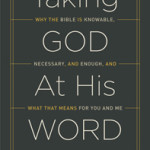 Taking God at His Word: Why the Bible is Knowable, Necessary, and Enough and What That Means for You and Me by Kevin DeYoung. Every Thursday I have lunch with the staff of IDC and the guy who ably leads us in song each week (he’s a faithful member of our church). After shooting the proverbial breeze and discussing the coming weekend’s order of worship we like to spend time working through a book together. We just finished DeYoung’s excellent introduction to the doctrine of Scripture. If there is a better one available for church members, I’m unaware of it. With typical clarity, freshness, and wit DeYoung equips Christians to stand on the authority and sufficiency of Scripture in an age aiming to topple those twin towers of truth.
Taking God at His Word: Why the Bible is Knowable, Necessary, and Enough and What That Means for You and Me by Kevin DeYoung. Every Thursday I have lunch with the staff of IDC and the guy who ably leads us in song each week (he’s a faithful member of our church). After shooting the proverbial breeze and discussing the coming weekend’s order of worship we like to spend time working through a book together. We just finished DeYoung’s excellent introduction to the doctrine of Scripture. If there is a better one available for church members, I’m unaware of it. With typical clarity, freshness, and wit DeYoung equips Christians to stand on the authority and sufficiency of Scripture in an age aiming to topple those twin towers of truth.
![]() The Life of Saint Macrina by Gregory of Nyssa. Macrina was the older sister of Gregory of Nyssa and this book is Gregory’s brief biography of one remember in history as full of piety and love. Written sometime between 380-383 A.D., Gregory initially wanted to further a conversation about his sister with a friend and what was supposed to be a letter, grew into a book. And what was supposed to be a book grew into one of the more celebrated lives of early monastic faith. All in all, this is a fascinating peak into the burgeoning asceticism of 4th century Christianity.
The Life of Saint Macrina by Gregory of Nyssa. Macrina was the older sister of Gregory of Nyssa and this book is Gregory’s brief biography of one remember in history as full of piety and love. Written sometime between 380-383 A.D., Gregory initially wanted to further a conversation about his sister with a friend and what was supposed to be a letter, grew into a book. And what was supposed to be a book grew into one of the more celebrated lives of early monastic faith. All in all, this is a fascinating peak into the burgeoning asceticism of 4th century Christianity.
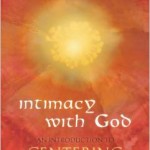 Intimacy with God by Thomas Keating. One strain of Catholic spirituality in the 20th century is that of “Centering Prayer.” Intimacy with God is a simple introduction to the practice, which quite frankly seems like a Catholicized version of various Hindu and Buddhist techniques of meditation. Pulling from giants of Catholic mysticism like St. Teresa of Avila and St. John of the Cross, Keating—a Trappist monk—offers instruction on how to center the mind in such a way to prepare the soul for contemplative prayer. An interesting read for academic purposes, but not much by way of practical benefit. Moving along . . .
Intimacy with God by Thomas Keating. One strain of Catholic spirituality in the 20th century is that of “Centering Prayer.” Intimacy with God is a simple introduction to the practice, which quite frankly seems like a Catholicized version of various Hindu and Buddhist techniques of meditation. Pulling from giants of Catholic mysticism like St. Teresa of Avila and St. John of the Cross, Keating—a Trappist monk—offers instruction on how to center the mind in such a way to prepare the soul for contemplative prayer. An interesting read for academic purposes, but not much by way of practical benefit. Moving along . . .
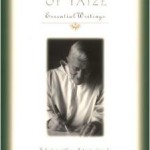 Brother Roger of Taize edited by Marcello Fidanzio. “Brother Roger Schutz (1915-2005) was the beloved founder of Taizé, an ecumenical monastic community in France.” A year after his death Fidanzio put together this slim volume, which functions like a “Best of Roger” collection. As such, the book lacks in cohesiveness and unity, but it does succeed in providing a glimpse into Brother Roger’s favorite themes: reconciliation, forgiveness, love, and community.
Brother Roger of Taize edited by Marcello Fidanzio. “Brother Roger Schutz (1915-2005) was the beloved founder of Taizé, an ecumenical monastic community in France.” A year after his death Fidanzio put together this slim volume, which functions like a “Best of Roger” collection. As such, the book lacks in cohesiveness and unity, but it does succeed in providing a glimpse into Brother Roger’s favorite themes: reconciliation, forgiveness, love, and community.
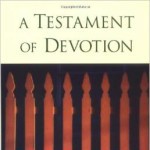 A Testament of Devotion by Thomas Kelly. Originally published in 1941, Kelly’s book has become a classic of Quaker spirituality. A Testament of Devotion consists of five loosely connected essays written in lovely prose. The spirituality of the book is airy and flowery. Rarely will the reader find any tethering to Scripture, even poorly interpreted Scripture. Instead, Kelly calls the reader to a life of simplicity and stillness not unlike what you might find in many Eastern religions. When I finished the book my first thought was, “Why is this a classic?” I’m still wondering.
A Testament of Devotion by Thomas Kelly. Originally published in 1941, Kelly’s book has become a classic of Quaker spirituality. A Testament of Devotion consists of five loosely connected essays written in lovely prose. The spirituality of the book is airy and flowery. Rarely will the reader find any tethering to Scripture, even poorly interpreted Scripture. Instead, Kelly calls the reader to a life of simplicity and stillness not unlike what you might find in many Eastern religions. When I finished the book my first thought was, “Why is this a classic?” I’m still wondering.
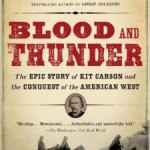 Blood and Thunder: The Epic Story of Kit Carson and The Conquest of the American West by Hampton Sides. After reading In the Kingdom of Ice I decided to finally read another Sides book collecting dust in my study: Blood and Thunder. What an interesting and saddening story. Here we are confronted with the majestic spirit of westward expansion in the mid-1800s, expansion embodied in the exploits of the legendary Kit Carson. Yet, that same majestic spirit had a dark side, one Sides doesn’t shy away from—the destruction of the Native American tribes. Carson’s ascension to iconic popularity came through his willing elimination of the Navajo. Sides gives us a human glimpse into how the West was really won.
Blood and Thunder: The Epic Story of Kit Carson and The Conquest of the American West by Hampton Sides. After reading In the Kingdom of Ice I decided to finally read another Sides book collecting dust in my study: Blood and Thunder. What an interesting and saddening story. Here we are confronted with the majestic spirit of westward expansion in the mid-1800s, expansion embodied in the exploits of the legendary Kit Carson. Yet, that same majestic spirit had a dark side, one Sides doesn’t shy away from—the destruction of the Native American tribes. Carson’s ascension to iconic popularity came through his willing elimination of the Navajo. Sides gives us a human glimpse into how the West was really won.
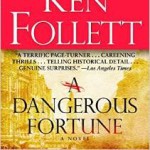 A Dangerous Fortune by Ken Follett. After reading most of his various period novels and smashingly successful works of historical fiction, I’ve found Follett has a discernible system in his historical narratives. It goes like this: create Compelling Hero; Compelling Hero proceeds to rise in prominence; insert Heinous Villain; said Villain proceeds to win every battle for 97% of the book; eventually Villain loses out to Hero, but there’s not telling how much emotional carnage for the reader lies in the wake. Tell said story with punchy prose, unnecessary indecency, and fascinating attention to historical detail. A Dangerous Fortune fits that formula to perfection. I’d stop reading such predictability if it wasn’t for the fact Follett still manages to effortlessly—and utterly—capture my attention.
A Dangerous Fortune by Ken Follett. After reading most of his various period novels and smashingly successful works of historical fiction, I’ve found Follett has a discernible system in his historical narratives. It goes like this: create Compelling Hero; Compelling Hero proceeds to rise in prominence; insert Heinous Villain; said Villain proceeds to win every battle for 97% of the book; eventually Villain loses out to Hero, but there’s not telling how much emotional carnage for the reader lies in the wake. Tell said story with punchy prose, unnecessary indecency, and fascinating attention to historical detail. A Dangerous Fortune fits that formula to perfection. I’d stop reading such predictability if it wasn’t for the fact Follett still manages to effortlessly—and utterly—capture my attention.
Click here to find other entries in the Recent Reads series.
